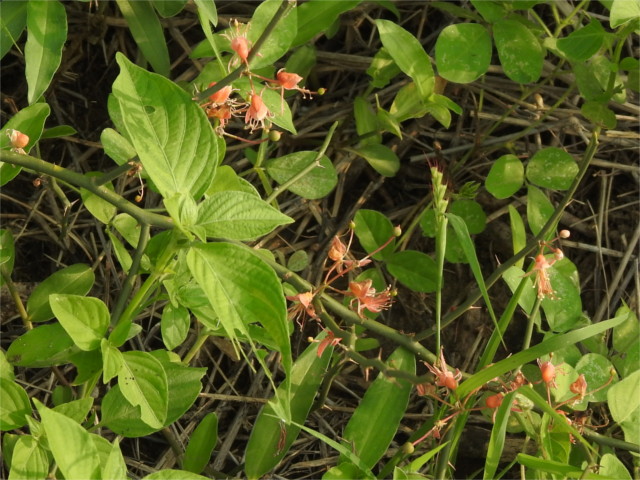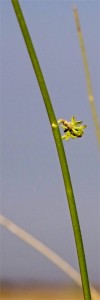North of the great Rann of Kutch, in the center of the Thar desert, one of the daily staples for dinners are made from the branches and berries of kair. “Common names” used by amateur nature watchers are odd. In the anglophone world there is an attempt to systematize descriptive names in English, whether or not a plant or bird exists in the geography where the English commonly come across it. So the “common name” given to kair ignores the Hindi word altogether, or the Gujarati cognate kerdo, and translates the Latin binomial to get bare caper. The same plant also grows in the Arab desert and arid parts of east Africa, where, no doubt, it has other common names. I can live with using the Latin binomial as a trans-cultural name, since the system recognizes the inventors of modern systematics. So, I’ll give up on the silly name bare caper, and call the plant Capparis decidua or kair.
I’d first met the plant served up on a plate in Jodhpur, then seen it in the Rao-Jodha Desert Park in that town. After that I’ve seen it in many places in the Thar desert. But this was the first time I’d come across it in the flowering season, just after the monsoon. The plant is a climber, but when it grows alone in the desert or a clearing in a forest it looks like a bushy man-high tangle of branches. As you can see, a stalk in the bush above has adapted to circumstances by becoming thicker and growing vertically.
The capers (family Capparis) are found in Africa, Asia, Australia, and Europe, and also in north, central and south Americas. This indicates a truly ancient genesis. Molecular evidence shows an old split between the old world and new world groups of this family. The old world (including Australian) species seem to originate from Africa.
The succulent is mostly leafless. Small leaves can be seen sometimes on young branches. This time around I didn’t see any. The paired thorns are pretty well spaced on the stalks, and do not discourage human manipulation. I suppose they are still sufficient to deter browsing. The red flowers seemed to grow in bunches of three, or, rarely, in singles. I suppose they will turn into the red berries in a couple of weeks, and ripen into black in a month. Someone mentioned an achar made of the berries. We found one in a shop in Bhuj, and brought it home.
The next day I found kair vines used by farmers to make hedges around their fields. They grow dense, support other vines, deter cattle from feeding in the fields, and can be harvested for food when needed. The Sanskrit words for the plant include nishpatrika, meaning without leaves, and tamprapatraka, which could refer to the yellow colour of the leaves. But quite as interesting are alternate names like granthika and granthila. Could the reference to books mean that you can obtain a fibre from it which can be used to make paper? Extracts from the plant seem to have the potential for several pharmacological uses. What a wonderful plant!






